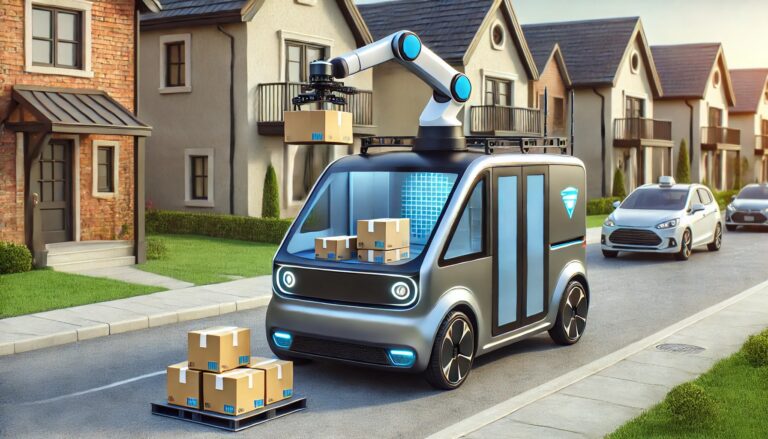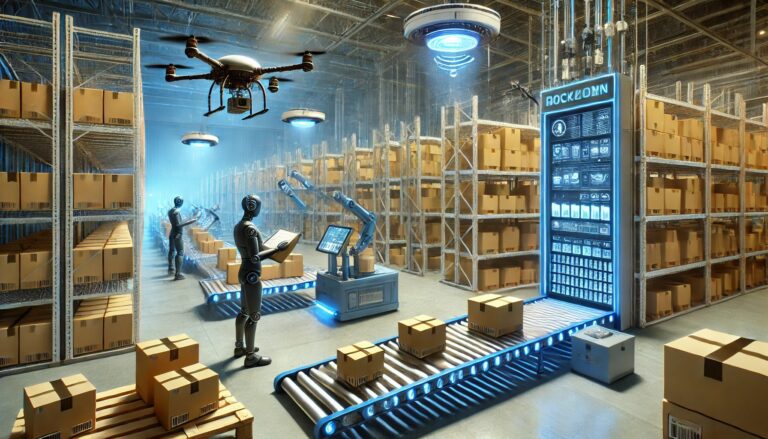Drone & Autonomous Logistic Delivery
The logistics industry has rapidly embraced drone and autonomous delivery systems to enhance efficiency and speed. Initially developed for military and surveillance purposes, drones are now being used for commercial deliveries, while self-driving vehicles are transforming last-mile logistics. Companies like Amazon, UPS, and FedEx have been pioneers in testing and deploying these technologies to revolutionize the supply chain.

Evolution of Drone & Autonomous Delivery
The logistics industry has witnessed a significant transformation with the introduction of drone and autonomous delivery systems. Initially developed for military applications and surveillance, drones have now found a strong foothold in commercial logistics, offering faster and more efficient delivery solutions. Companies such as Amazon, UPS, and FedEx have been at the forefront of testing and deploying these technologies, aiming to revolutionize last-mile logistics. Autonomous delivery vehicles, including self-driving cars and robotic couriers, are also being integrated into supply chains to improve operational efficiency. As technology advances, businesses are increasingly adopting these innovative solutions to meet rising consumer demands for faster and more convenient deliveries.
Key Benefits of Drone & Autonomous Delivery
One of the most notable advantages of drone and autonomous delivery is speed and efficiency. Unlike traditional delivery methods that rely on road infrastructure, drones can bypass traffic congestion and reach destinations faster. This makes them particularly useful for last-mile logistics, where timely delivery is crucial. Additionally, automation helps reduce labor costs and fuel consumption, leading to overall cost savings for businesses. Another significant benefit is the positive environmental impact, as many autonomous vehicles and drones operate on electric power, lowering carbon emissions. Furthermore, drones provide accessibility to remote or disaster-affected areas, ensuring that critical supplies such as medicine and food can reach those in need even when roads are impassable.


Future of Drone & Autonomous Delivery
Despite the promising benefits, several challenges hinder the widespread adoption of drone and autonomous delivery. Regulatory restrictions remain one of the biggest barriers, as many countries impose strict airspace laws and safety regulations that limit drone operations. Additionally, drones and autonomous vehicles have payload limitations, making them unsuitable for transporting heavy goods. Weather conditions also pose a significant challenge, as strong winds, rain, and extreme temperatures can disrupt drone functionality. Another critical concern is security and privacy, as these technologies are vulnerable to hacking, unauthorized access, and potential misuse. Addressing these limitations requires advancements in technology, regulatory flexibility, and increased public acceptance of autonomous logistics solutions.
Challenges & Limitations
As technology continues to evolve, the future of drone and autonomous delivery looks promising. Developments in artificial intelligence and machine learning will enhance navigation systems, enabling drones and self-driving vehicles to make smarter, real-time decisions. Hybrid transport systems, where drones work alongside traditional logistics methods, will create more seamless and efficient supply chain solutions. Additionally, industries beyond e-commerce, such as healthcare and agriculture, are expected to embrace autonomous delivery for medical supplies, emergency response, and farm produce transportation. To support this growing industry, governments worldwide are working towards adapting regulations that accommodate the safe and widespread use of drone logistics. With continued innovation and regulatory advancements, drone and autonomous delivery are set to redefine the future of logistics

